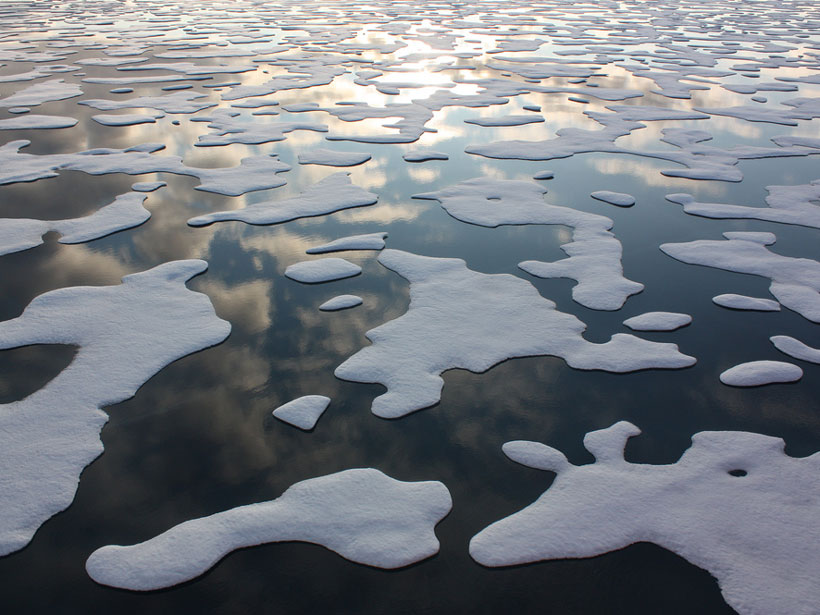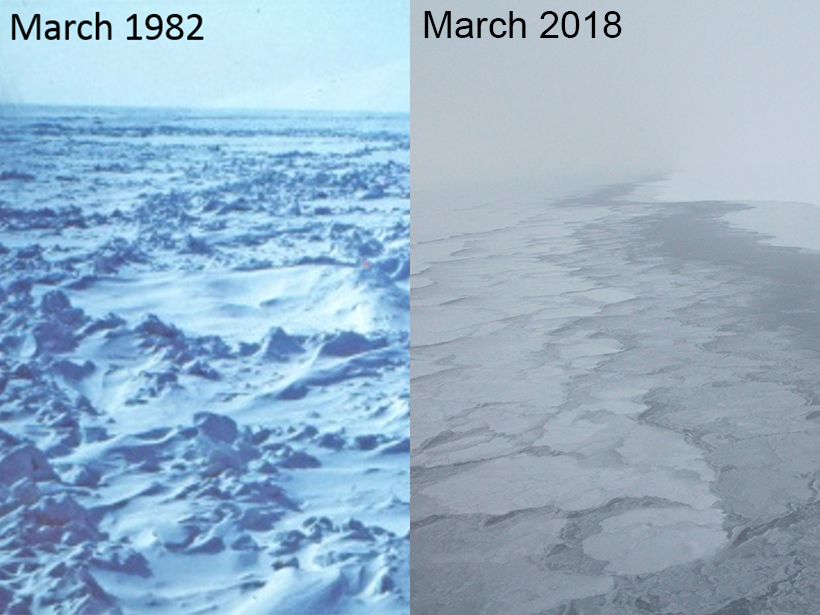Estas intensas tormentas marítimas suponen una amenaza para las comunidades costeras y las actividades económicas de las altas latitudes y puede que influencien el clima y la circulación oceánica.
sea ice
When Wild Weather Blew Old Sea Ice South
Last winter, an unprecedented high-pressure system over the Arctic drove nearly a quarter of old sea ice into warmer waters, putting it at greater risk of melting.
The Challenges of Forecasting Small, But Mighty, Polar Lows
These intense maritime storms pose threats to high-latitude coastal communities and economic activities and may influence climate and ocean circulation.
Irtysh River Drove Arctic Sea Ice Expansion 3 Million Years Ago
The Siberian river’s creation caused a massive influx of fresh water into the Kara Sea and radically changed the Arctic Ocean and Earth’s climate.
Wheels Down for NASA’s Operation IceBridge
Over a 13-year period, almost a thousand flights surveyed land and sea ice across the Arctic, Antarctic, and Alaska, providing unique insights into how the polar regions are changing.
Claire L. Parkinson Receives the 2020 Roger Revelle Medal
Claire L. Parkinson was awarded the 2020 Roger Revelle Medal at the virtual AGU Fall Meeting in December. The medal is for “outstanding contributions in atmospheric sciences, atmosphere-ocean coupling, atmosphere-land coupling, biogeochemical cycles, climate or related aspects of the Earth system.”
Laser Flashes Shed Light on a Changing Arctic
An ongoing project in northern Alaska is using pulses of laser light to monitor anthropogenic activity, ice quakes, and marine wildlife.
South Pole Ice Core Reveals History of Antarctic Sea Ice
Every summer, most of the sea ice near Antarctica melts away, but its saltiness leaves a permanent record that scientists can trace back for millennia.
Arctic Report Card Founder Discusses the Fate of the Pole
Researcher Jackie Richter-Menge has reported on the status of the melting Arctic for the past 15 years. Her observations tell a story of “mind-blowing change.”









